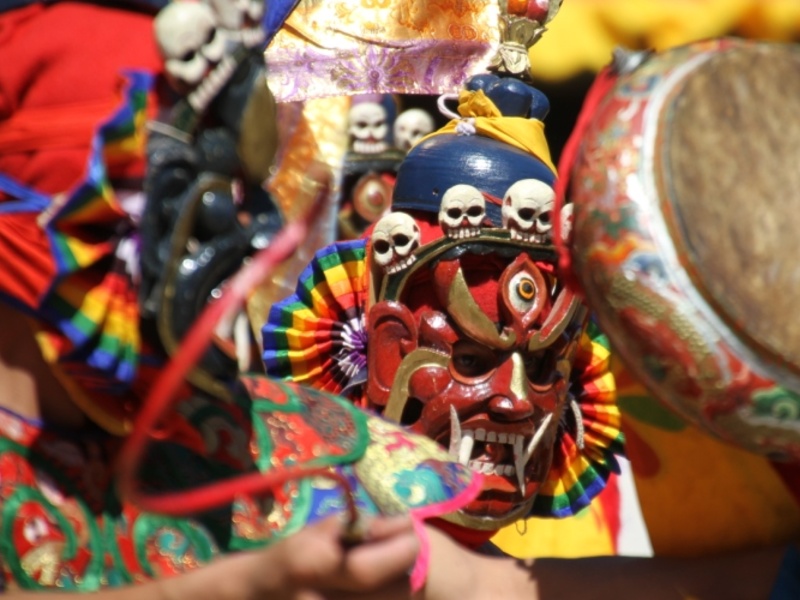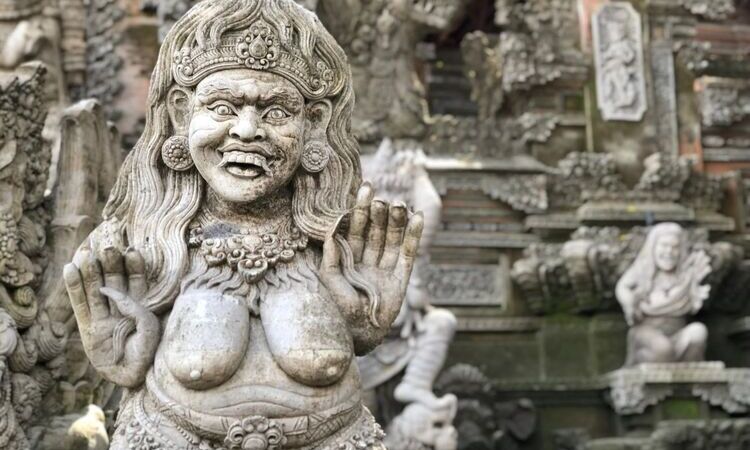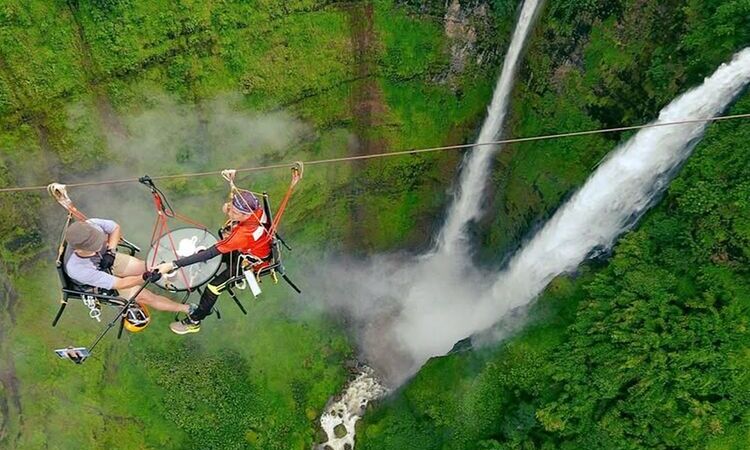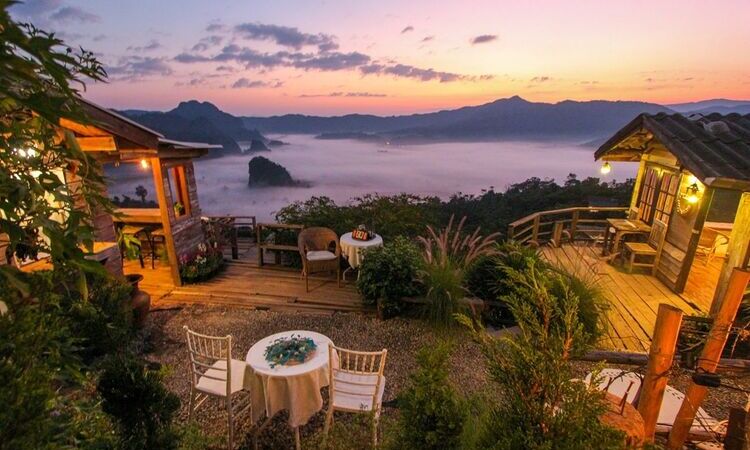Magical Mask Dances In Bhutan
The local temples and monasteries scattered all over the country are the centers for a wide range of festivals where the sacred mask and folk dances are performed annually. Magical mask dances in Bhutan have become Bhutan’s spiritual symbol for a long time. In the book Himalayan Art, Madanjeet Singh said “…. These ageless images are undoubtedly the most fantastic and formidable art-link in the entire Himalaya. With these masks, we are presented with a radical departure from cultures and aesthetics more familiar to us. They provoke us emotionally and intellectually. And their examination offers both an occasion to develop intuitions about peoples, far distant and long ago, as well as insights about one’s self, here and now.” Exotic Voyages really want to give you the essential information about mask dances in Bhutan, to enrich your mind and motivate your travel. Don’t take our words out. Note in your Bhutan travel guide.
1. Origin
The mask dances have developed in three periods. It was introduced for the first time by Guru Padmasambhava and followed by Saint Pema Lingpa. Many of Pema Lingpa’s stage portray different sets of divine attendant and acrobats who prepare a path to heaven. In the third period, Zhabdrung Ngawang Namgyel, a great person who founded the nation-state of Bhutan, introduced mask dances with the principal items at the annual festive occasion in the capital of Bhutan, Thimphu. In Bhutan, numerous mask dances have different names according to their types but the best renowned being the Tshechus. The performance of mask dances is a deeply spiritual affair.
One dancer is wearing mash to perform mask dance
2. Symbolism
The masks symbolize saints and sages, female and male protective deities and legendary personalities. The performance of the sacred mask dance is displayed by religious music of cymbals, drums, horns, coaches, and bells. All the magical mask dances in Bhutan can be understood externally, esoterically, and internally. These dances are formed of entertainment in externally. Internally, they embody the tangible and intangible wealth of unique Bhutan. Esoterically, the dances are the source of joy for the beings at both mundane and supreme levels of existence. And it should not at any cost be considered on a par with other forms of entertainment. For a long time, people have supposed that life after death like most of the series in the mask dances illustrates life after death.
.jpg)
The sacred mask dance is displayed by religious music of cymbals, drums, horns, coaches, and bells
3. The Performance
The dances are not only the dances but also the deep experiences that temporarily make dancers with the divinities they are representing. The dance steps were not created, they were considered the reproductions of celestial dances that meditation masters have witnessed during their deep meditative trances. It is widely believed that the dancers will be purified of his sins if he performs the Chhams but no women dancers are involved in the mask dances. Dancers wear colorful costumes made of silk or brocade, dressed with ornaments of carved bones. They hide their faces in red wooden masks with a hawkish nose, a grin and a big phallus on top. They are called Atsara, clown figures who explain the meaning of mask dances to audiences, who joke around the crowd and liven up the festival with their witty behaviors and exaggerated movements. But the Atsaras are more than just clowns. The term Atsara is derived from the Sanskrit word Acharya called Dubthop in Bhutanese (Dzongkha). The reason for their amusing appearances is they might remind what people could reappear in any possible form in the future. They are the only one allowed to mock religion in a society that treats religious things with respect. Bhutanese people believe that they can purity their souls, wash away their sins in life and bring themselves good luck and fortune by watching these dances. Why don’t you witness these unique festivals in your Bhutan cultural tours?
Mask Dance in Jomolhari Festival
4. Types of mask dances
Dances are divided into 3 main categories: dramatic dances that push morality, dances that protect people from harmful spirits, and the last one that celebrates victories. Especially the Drametse Nga Cham is declared a masterpiece of the Oral and Intangible Cultural Heritage of Humanity during (on the third proclamation in Paris on November 25, 2005). Dancers wearing yellow skirts and animal masks beat drums as they dance, they represent Guru’s entourage.
Drametse Nga Cham at Domkhar Tsechu
5. Mask dances today
Mask dances are performed annually in all important Dzongs, temples and in monasteries and last for three to five days as usual. The occasion is known as Tshechu as they are normally taken place on the 10th day of the months and is an occasion for the village people to gather around and partake in the festival. Dressed in their finest clothes to come to the mask dance festival, they believe that it’s their entering into a magical realm where celestial blessings will protect them from all harm and sins all year. The most popular Tsechus for visitors take place in Paro during spring, Thimphu, and Bumthang in autumn. I do hope that with the brief information of magical mask dances in Bhutan, this tiny but giant country evokes the dream of your Bhutan travel to discover the unique Bhutan of Happiness.

Mask dances today in Bumthang in Autumn







